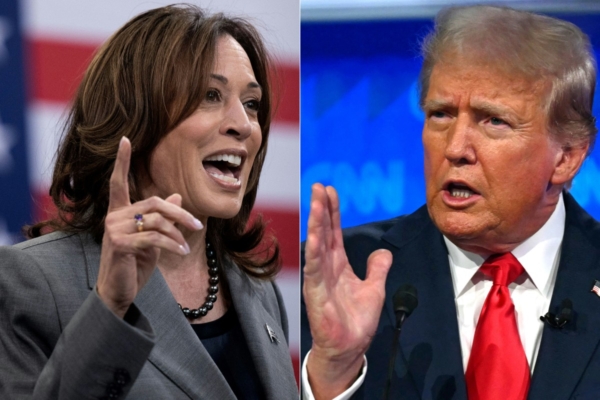In this year’s presidential election, the sharp contrast in governing philosophies between Vice President Kamala Harris and former President Trump has been evident. The two candidates have starkly different positions on issues such as taxation, abortion, immigration, global alliances, climate change, and the democratic system itself.
Since becoming the Democratic nominee and replacing President Biden, Harris has promised to chart a new course, even though she has accepted some of Trump’s policies. Her platform mainly includes tax cuts for the middle class, tax increases for the wealthy and corporations, restoring abortion rights, and government action on climate change.
On the other hand, Trump hopes to complete much of the work that was hindered during his term due to the global pandemic. The Republican candidate aims to extend and expand his 2017 tax cuts, significantly increase tariffs, provide more support for fossil fuels, and concentrate more government power in the White House.
Both candidates have outlined their positions on key issues in speeches, advertisements, and other occasions. However, many of their proposals lack specific details, making it difficult to determine how they will translate their intentions into laws or who will foot the bill. The outcome of the November election is expected to bring significant changes to tax laws, U.S. support for Ukraine, abortion rights, and commitments to combat climate change damage.
Here, we present a comparison of the positions of the two candidates on ten key issues:
Kamala Harris has called on Congress to pass legislation to protect abortion rights under federal law, a right that had existed for nearly 50 years before it was overturned by the Supreme Court in 2022. Trump, on the other hand, has avoided addressing when abortion procedures should be restricted during pregnancy and has emphasized leaving such decisions to individual states. While stating that he would not sign a nationwide abortion ban into law, he has also expressed support for women’s access to fertility treatments.
During her time as a California senator, Harris was one of the early proponents of the Green New Deal. She has been focusing on implementing the climate provisions of the Inflation Reduction Act during her tenure as Vice President, providing incentives for projects such as electric cars and clean energy. On the other hand, Trump has dismissed climate change as a hoax and vowed to support the fossil fuel industry.
Harris has criticized Trump as a threat to the democratic system and has emphasized the need to defeat him in the November election. Trump, on the other hand, has refused to accept the outcome of the 2020 election and has made promises to pardon defendants from the events of January 6th. He has threatened to jail lawyers, election officials, donors, and others involved in alleged voter fraud.
Regarding the future of federal government restructuring, Harris opposes Project 2025 and supports measures to make it more difficult to lay off federal employees. On the contrary, Trump has vowed to reform federal bureaucracies and root out corrupt officials.
Harris has highlighted her past experiences as California Attorney General, emphasizing her efforts in prosecuting drug trafficking and human trafficking organizations. Trump has pledged to launch the largest expulsion campaign in U.S. history, including the use of detention camps and deploying the National Guard in cities facing rampant violent crime.
In the realm of foreign policy, Harris has been critical of Vladimir Putin’s actions and has condemned his brutality. The Biden-Harris administration has supported Ukraine by providing extensive military aid and promising ongoing support against Russian aggression. In contrast, Trump has questioned U.S. aid to Ukraine and pledged to reassess the mission and purposes of the NATO alliance.
In terms of trade policy, the Democratic administration has maintained tariffs imposed on China by Trump, along with implementing new tariffs on certain products. Conversely, Trump proposes significant tariff increases on almost all imported goods to combat what he sees as foreign deception, particularly targeting China.
On the taxation front, Harris promises to cut taxes for the middle class and introduce tax credits for families and new parents. Trump, on the other hand, aims to extend and expand the 2017 tax cuts he signed into law, along with proposing broad tax cuts for businesses and individuals.
Harris and Trump will face each other in their first debate on Tuesday night, providing a pivotal opportunity for them to showcase their differing visions for the nation’s future. This debate may serve as a crucial moment for Americans to gain a deeper understanding of the contrasting policy positions of the two candidates and gauge the path of the country’s future.

